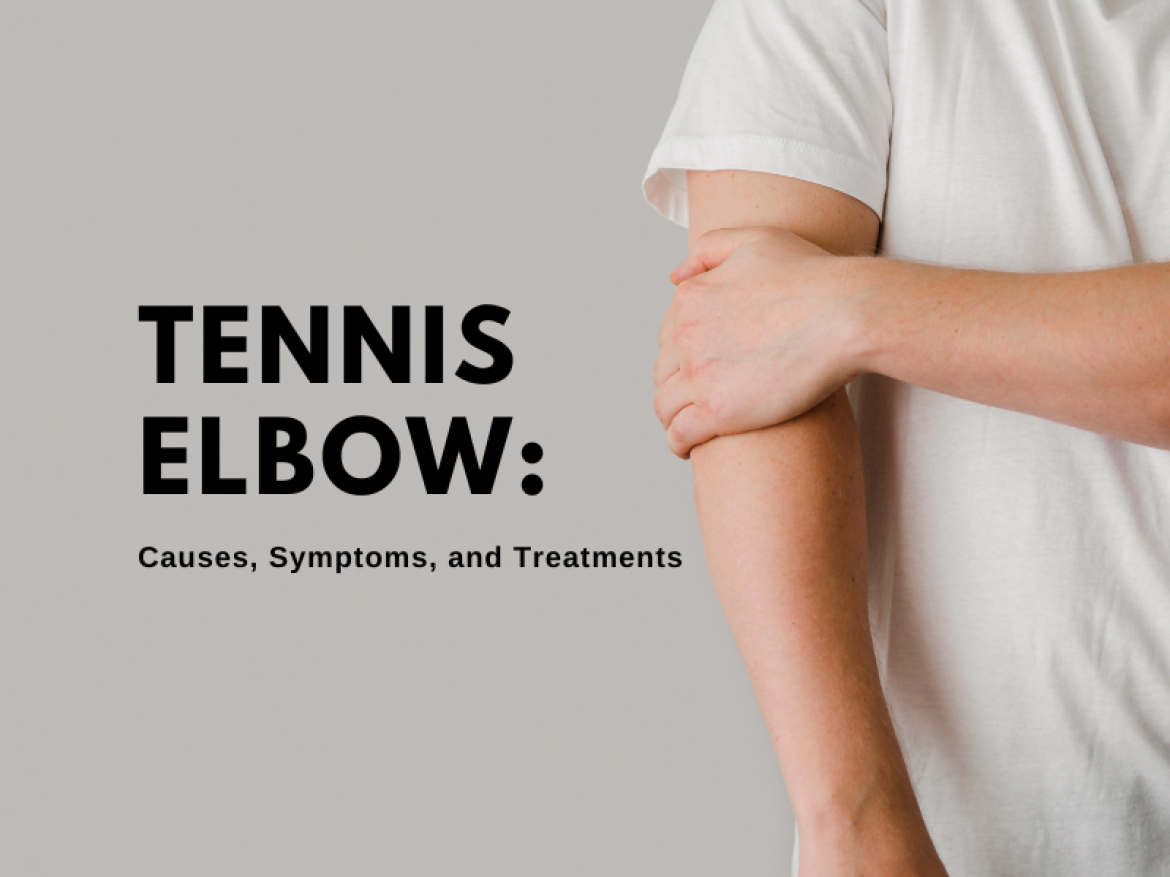Tennis elbow, medically known as lateral epicondylitis, is a painful condition that occurs when the tendons in your elbow are overworked, usually by repetitive motions of the wrist and arm. Despite its name, tennis elbow can affect anyone, not just athletes. In this comprehensive guide, we will explore the causes, symptoms, and various treatment options available for tennis elbow. We’ll also share expert insights from a renowned pain consultant in Kolkata, Dr. Krishna Poddar, to help you manage and prevent this condition.
What is a Tennis Elbow?
Tennis elbow is a type of tendinitis that causes pain around the outside of the elbow. The pain is primarily due to inflammation or, in some cases, a series of microtears in the tendons that join the forearm muscles to the outside of the elbow. This condition is commonly seen in people whose jobs or hobbies involve repetitive hand, wrist, or arm movements.
Causes of Tennis Elbow
Tennis elbow is caused by repetitive stress on the forearm muscles and tendons. Common activities that can lead to this condition include:
- Sports: Repetitive motions, such as those in tennis, squash, or racquetball, can stress the elbow.
- Occupational Hazards: Jobs that involve repetitive wrist and arm movements, such as painting, plumbing, carpentry, and butchering.
- Hobbies: Activities like knitting, gardening, or playing musical instruments can also contribute.
Symptoms of Tennis Elbow
The symptoms of tennis elbow can develop gradually and may include:
- Pain and Tenderness: The primary symptom is pain and tenderness on the outside of the elbow. This pain may extend down the forearm and into the wrist.
- Weakness: You might experience weakness in your forearm, making it difficult to perform tasks such as turning a doorknob or holding a coffee cup.
- Stiffness: Your elbow may feel stiff in the morning, and you may have difficulty fully extending your arm.
Diagnosis
Diagnosing tennis elbow involves a physical examination, review of medical history, and possibly imaging tests like X-rays or MRIs and Ultrasonography.
Treatment Options
The treatment for tennis elbow aims to relieve pain, reduce inflammation, and promote healing. Here are some common treatment options:
- Rest and Activity Modification
One of the most crucial steps in treating tennis elbow is to rest the affected arm and avoid activities that trigger pain. Modifying your technique or using ergonomic tools can also help.
- Medications
Over-the-counter pain relievers like ibuprofen or naproxen can help reduce pain and inflammation. In severe cases, your doctor may prescribe stronger medications.
- Laser Therapy
Laser treatment offers a modern, non-invasive approach to managing tennis elbow, with the potential for quick and effective pain relief. By promoting natural healing processes and reducing inflammation, laser therapy can help patients return to their normal activities without the need for more invasive procedures.
- Bracing
Wearing a brace or strap around your forearm can help reduce strain on the injured tendons. These supports are handy during activities that might exacerbate your symptoms.
- PRP Therapy
In tennis elbow, the tendons around the elbow become inflamed and damaged due to repetitive stress. PRP therapy works by introducing growth factors directly into the injured tendon, which stimulates the body’s natural healing process. This can result in reduced inflammation, decreased pain, and improved tendon strength over time.
- Shockwave Therapy
Extracorporeal shockwave therapy (ESWT) uses sound waves to promote healing in the affected tendons. This non-invasive treatment can be effective for some patients.
Prevention Tips
Preventing tennis elbow involves reducing the strain on your forearm muscles and tendons. Here are some tips to help you avoid this condition:
- Strengthening Exercises: Regularly perform exercises to strengthen your forearm muscles. This can help absorb the stress of repetitive motions.
- Proper Technique: Use the correct technique in sports and daily activities. Consider professional coaching if you’re an athlete.
- Ergonomics: Use ergonomic tools and maintain good posture during repetitive wrist and arm movements.
- Stretching: Incorporate stretching exercises into your routine to maintain flexibility in your forearm muscles and tendons.
- Gradual Increase: Gradually increase the intensity and duration of your activities to avoid overloading your tendons.
Expert Insights: Pain Consultant in Kolkata, Dr. Krishna Poddar
To gain further insights into managing and preventing tennis elbow, we consulted with a pain consultant in Kolkata, Dr. Krishna Poddar. Dr. Poddar emphasizes the importance of early diagnosis and treatment to prevent the condition from worsening. He recommends a combination of rest, physical therapy, and ergonomic adjustments to manage symptoms effectively. For those experiencing persistent pain, Dr. Poddar advises seeking medical consultation to explore advanced treatment options.
FAQs
Q1: What is the primary cause of tennis elbow?
A1: Tennis elbow is primarily caused by repetitive stress on the forearm muscles and tendons, often due to activities involving repetitive wrist and arm movements.
Q2: Can a tennis elbow heal on its own?
A2: In many cases, tennis elbow can improve with rest, activity modification, and conservative treatments. However, if symptoms persist, medical intervention may be necessary.
Q3: How long does it take to recover from tennis elbow?
A3: Recovery time varies depending on the severity of the condition and the effectiveness of the treatment. It can take several weeks to several months for symptoms to fully resolve.
Q4: Is surgery necessary for tennis elbow?
A4: Surgery is rarely needed for tennis elbow. Most cases can be managed with conservative treatments. Surgery is considered only if other treatments fail to provide relief.
Q5: How can I prevent tennis elbow?
A5: Preventive measures include regular strengthening exercises, using proper technique, ergonomic adjustments, stretching, and gradually increasing the intensity of activities.
Conclusion
Tennis elbow is a common condition that can significantly impact your daily life. Understanding the causes, symptoms, and treatment options is crucial for effective management and recovery. Taking proactive steps to protect your forearm muscles and tendons can go a long way in maintaining your overall well-being.

